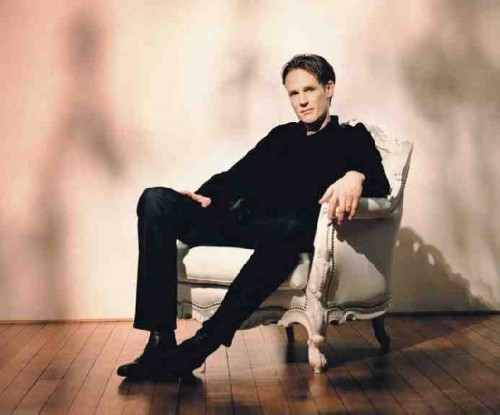Ian Bostridge with Les Violons du Roy at Carnegie
Weaving a Magic Spell
By: Susan Hall - May 15, 2011
Les Violons du Roy
Carnegie Hall
May 8, 2011
Bernard Labadie, Conductor
Ian Bostridge, Tenor
Handel, Suite from Alcina
Handel, “Forte e lieto” from Tamerlano
F. Gasparini, “Forte e lieto” from Tamerlano
Handel, Concerto Grosso in F Major, Op.3, No. 4
Caldara, “Lo so, lo so; con periglio” from Joaz
Handel, "Scorta siate" from Giulio Cesare
Francesco Geminani, Concerto Grosso in D Minor
Vivaldi, "Sazierò col morir mio" from Ipermestra, RV 722
Vivaldi, "La tiranna e avversa sorte" from Arsilda, RV 700
Handel, "D'un barbara scortese" from Poro
W. Boyce, Symphony No. 1 in B-flat Major, Op. 2, No. 1
Handel,"From celestial seats descending" from Hercules
Handel, "Where congeal'd the northern streams" from Hercules
It is doubtful that the brilliant tones of Les Violons du Roy come from the use of baroque-style music bows, but they contribute. Bent at the center and stiff, they help call forth a distinctive and beautiful sound. The orchestral performance under Bernard Labadie is both orderly in the baroque tradition and also lively and full of articulated tunes.
The Handel Suite, which opened the program, and Handel’s Concerto Grosso showed the composer at the height of his powers. Handel had been Kappelmeister to George Louis in Hanover, Germany before George became King of England, at which time, Handel too adopted the English nationality. He benefited from the same royal patronage in Germany and England.
Even with ‘du roy’ in their title, Les Violons du Roy is not a group that depends on a King’s largesse for their remarkable music. At Zankel Hall they accompanied the fine British tenor, Ian Bostridge who is a specialist in witchcraft. He certainly can weave a spell. Of his unusual career trajectory, he remarks that he is ‘a cat among the pigeons’, following his own bliss (to splendid effect) and not bound by the strictures of music school.
At twelve he studied German with an instructor who used Schubert songs to teach the language. Bostridge was hooked, but did not break free from academia until he had received a PhD from Oxford in history, specifically the history of witchcraft.
Today he sings some opera, including Benjamin Britten. He brings to a beautiful but also emotionally charged voice, dramatic and wide ranging tones, which yield a very distinctive sound. In this program he honored three baroque tenors. John Beard was one of Handel's favorite interpreters. Francesco was perhaps the first tenor to become an opera superstar. Annabale Fabri was also a Handel specialist who performed all the oratorios. Bostridge has a new CD celebrating the tenors.
While Bostridge may bring very much the same voice to all three of these singers. his unusual range in every vocal area creates slightly different emphases and tones for the songs of each tenor. What astonishing techniques all four tenors clearly have (had). Gymnastic vocal leaps, plunges, runs, and roulades scamper after and on top of each other. The three 17th-century tenors were the first tenor superstars and Bostridge joins the group both in his tribute to them and in his own very present superstar performance. The historic tenors brought meaningful interpretations in their time. Bostridge makes old time music seem very contemporary in ours.
The world is on to Bostridge now and it was easy to see why in his first encore, “Scherza infida” from Ariodante, which is often borrowed by tenors from the mezzo soprano repertory. Bostridge admitted stealing, but his performance felt very much like he owned the piece. There is no better place to hear him and the remarkable Violons du Roy than the Carnegie Halls.



